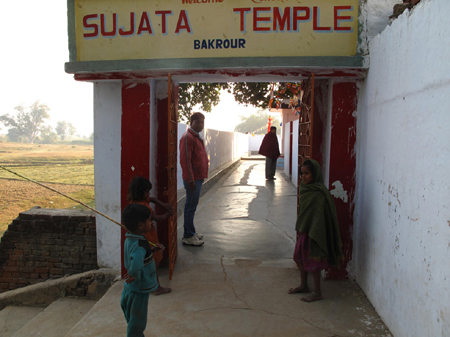Economy
Indian guides get tips for speaking Mandarin
By Wang Xing (China Daily)
Updated: 2011-01-17 14:24
 |
Large Medium Small |
|
 |
|
The Sujata Temple, a religious site in Bakrour village, Bihar, India, now proving to be attractive to Chinese tourists. Locals with a basic knowledge of Mandarin can earn 1,500 rupees ($33) acting as guides for two days - enough to feed a family of four. [Photo / China Daily] |
As a native of Bodh Gaya, a place famous for Gautama Buddha's attainment of "enlightenment", Kumar now specializes in taking Chinese tourists around the religious site.
Although his Chinese pronunciation and vocabulary are limited, the 1,500 rupees ($33) he charges for a two-day guide service is enough to enable him to feed his wife and two sons.
"There are more and more Chinese people coming here, so learning Chinese gives me a good advantage," said Kumar, 35.
He said because of China's increasing economic power, Chinese has taken over from Japanese and South Korean to become the most popular language for locals to learn.
"Not only adults but also small children want to learn Chinese so they can get tips from Chinese tourists," he said.
India has long benefited from the fact that English is the main language of global business. But as China's economic power has grown, the trade and personal communications between India and China have also developed.
| ||||
Ghayam Bahadul, owner of a handicraft store near the site where Gautama Buddha attained "enlightenment", said his store used to attract mostly Western tourists. "But now, Chinese tourists are coming and they buy a lot of stuff here," he said.
According to Kumar, there are altogether 11 Chinese schools in Bodh Gaya, most of them for children. Adults have to take courses in big cities such as New Delhi to learn the language.
He said one of his sons is now taking the same course that he did in New Delhi. "After his graduation, I will send him to China on business," he said.
| 分享按钮 |



